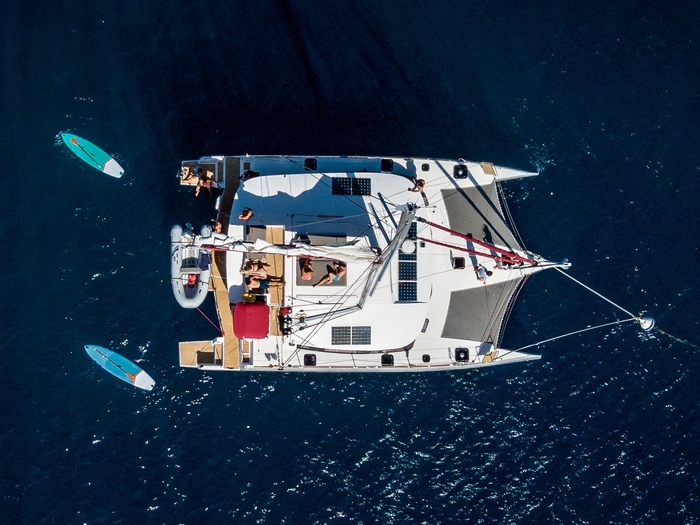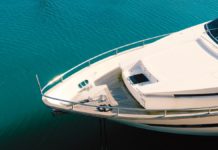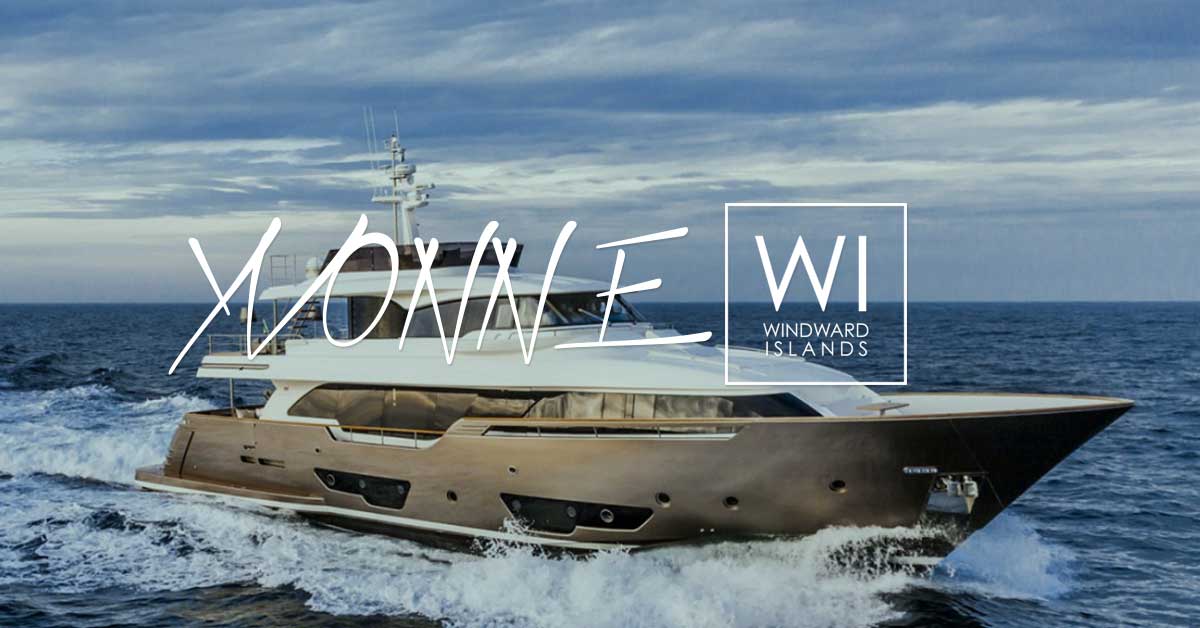
The debate between trimarans and catamarans has been raging for years, with no clear victor in sight. Despite their long-standing popularity as cruising vessels, trimarans have seen a resurgence recently – but what sets them apart from catamarans? The subtle differences lie mainly within the hulls; while monohulls are distinguishable several yards away, distilling one multihull from another requires closer examination of characteristics such as living space size accommodations, seaworthiness ratings , speeds achieved on test runs.
With these variables to consider – along with personal preference – deciding which vessel is right may be difficult indeed!

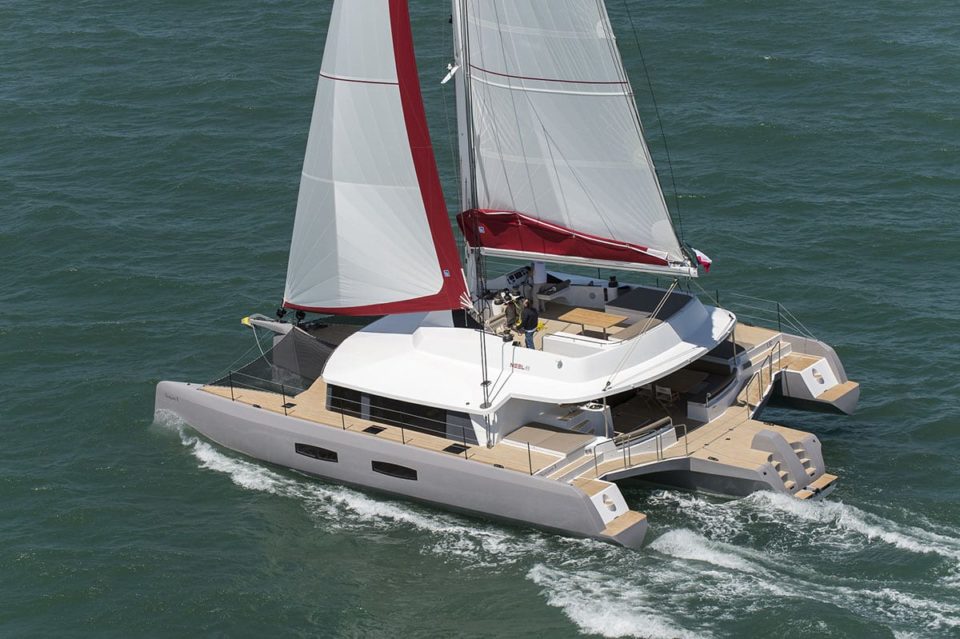
Performance and Stability: two distinct sailing experiences
The stability of a catamaran vs a trimaran
When sailing on a monohull in strong winds, the boat can potentially capsize due to its single hull and lack of floatation. On the other hand, multihulls such as catamarans are more buoyant because they have two floats that help prevent immersion; however it still may be uncomfortable when navigating heavy seas. For the most optimal sail experience with great stability even through rough waters–pleasure trimarans provide an ideal combination! Three connected hubs act like small wheels over rippling waves while providing excellent comfort aboard no matter what conditions lie ahead!
Read also : Trimaran our ultimate guide
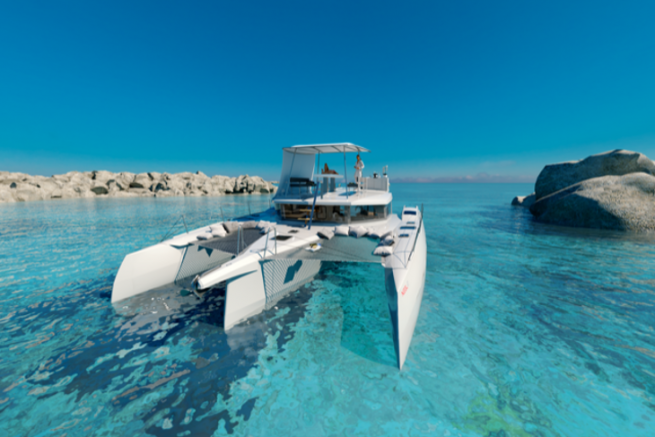
The wind and its influence on the performance of multihulls
In sailing, trimarans outperform catamarans in a headwind situation. Their unique hull design features both daggerboards and central weight focus which allows them to counteract the thrust of wind better so as to stay on course rather than drifting away like their counterparts do. This subtle difference makes significantly more efficient vessels resulting in overall faster speeds when heading into the wind – making trimiras an ideal choice for less experienced sailors seeking reliable performance!
Catamarans vs trimarans surface: different living spaces
Catamarans have been taking the world’s oceans by storm with their ever-expanding sizes and luxurious designs. With boats like the majestic Lagoon Seventy 7, Allegria 67 from Fountaine Pajot, or Sunreef Power 70 to choose from, it’s no wonder why these sleek vessels are rapidly becoming a favorite choice for travelers looking for plenty of room on board.
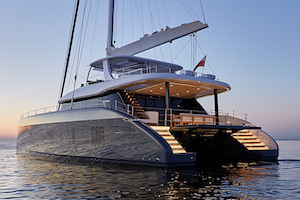
Looking beyond traditional catamaran styles?
Trimarans such as DragonFly boast amazing features thanks to its “Swing Wing” system while Rapido Trimaran offers “an experience like nothing else”—thanks in part due to Morrelli & Melvin architect firm constructing this Vietnam built masterpiece!
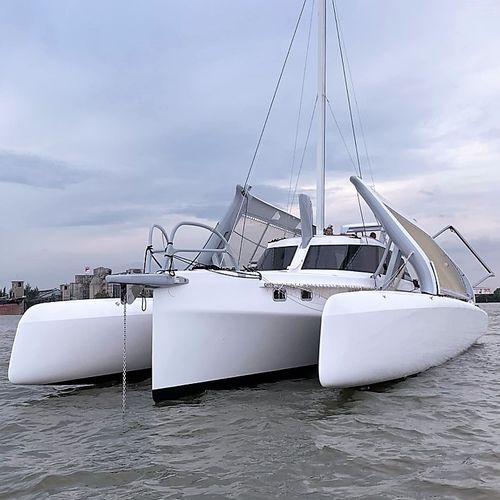
For those seeking a luxurious floating lifestyle, the trimarans from shipyard NEEL are second to none! These vessels feature ‘Cockloon®’ areas which seamlessly connect saloons and cockpits – providing uninterrupted living spaces with breathtaking panoramic views. Alongside this is an expansive flybridge offering extra room along with comfortable cabins nestled within their own designated floats for ultimate relaxation. You could say that these modern marvels of engineering provide all you need in one single package – now it’s just down to choosing your destination!
Looking for the perfect blend of stability, comfort and interior space? Look no further than the NEEL 65 – a unique trimaran that boasts roomy cabins thanks to its enlarged volume. Not only does it offer more living area compared with typical catamarans – but also features an optimally aligned central hull which provides extra safety at anchor! So if you’ve been in two minds between these nautical vessels; perhaps this could sway your decision once and for all…
Trimaran vs catamaran safety: the width of trimarans makes them safer
The trimaran stands out as the most secure of its multihull contemporaries. Its superior design consisting of three hulls, effective anti-drift strategies and centre-mounted weights combine to provide it with a groundbreaking 27° righting moment – allowing for excellent stability in even gusty weather or choppy waters. In comparison, catamarans offer just 12° degrees protection against capsize – meaning that the trustworthiness offered by a trimaran is hard to match! Further punctuating this remarkable level of security are features such as buoyancy tanks which ensure that if capsizing does occur, sinking will not be an issue: making trimarans perfect vessels for sailing’s safety conscious connoisseurs.
Racing trimarans
In the last decade, trimarans have surged in popularity for racing purposes due to their enhanced speed and safety capabilities. Their stability on rough seas allows them to be pushed further than catamarans can go without sacrificing control of the vessel; this is why most multihull races since 2010 have been captured by a trimaran! The Jules Verne Trophy has not seen any different – all winners since its start in 2010 are proud owners of these three-hulled vessels.
How to make the right choice between a monohull, a catamaran, and a trimaran?
No matter what sailing adventure you have in mind and the destination, it is essential to select a vessel that will fulfill your dreams while meeting all of your demands. Make sure to pick wisely!
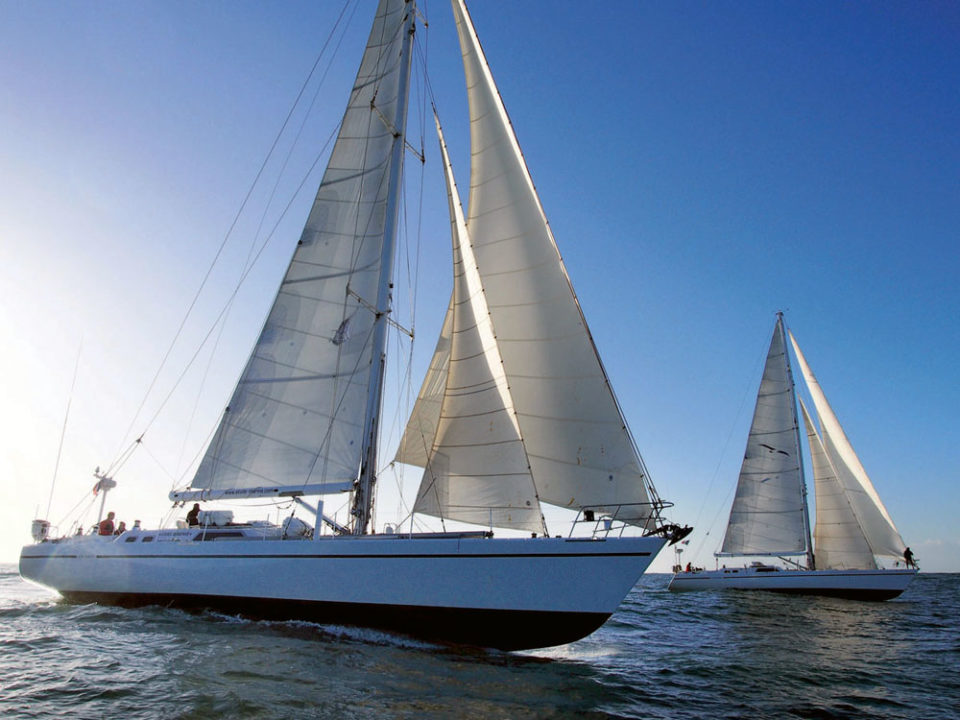
Choose a monohull sailboat if you like sailing!
Nothing quite compares to the feel and freedom of a sailing adventure aboard your own monohull sailboat. With its large, retractable keel, you can explore shallow waters where other boats may not venture while taking in stunning vistas from beyond the coastline. Enjoy an unforgettable experience with every rustle of wind across your sails!
Read also : Monohull vs Catamaran, which one to choose?
Pick a catamaran if you like volume and calm seas
TThe catamaran is perfect for adventurers seeking the tranquility of sailing with family and friends. With a spacious interior, multiple cabins equipped with bathrooms, and an enviable amount of storage capacity above 12m in length – it’s easy to see why these boats have become so popular! However when navigating more turbulent seas keep in mind that their windward grip may make maneuvering tricky; but Catana’s boat selection has you covered thanks to its range featuring daggerboards allowing captains ultimate control over any situation.
Pick a trimaran for a good combination of volume and performances

For those looking for a sailing experience like no other, trimarans are the perfect answer. They offer lightning-fast speeds and truly exhilarating performances on open waters – all while providing plenty of roomy living space comparable to catamarans of similar size! Whether you’re attempting an adventurous transatlantic crossing or simply want to enjoy some pleasant cruising around the world, selecting a recreational trimaran could be your best bet.
Enjoy cruising on the NEEL 51, a unique charter yacht that offers plenty of space without sacrificing performance. This trimaran-inspired vessel is perfect for travelers who want to explore new destinations quickly and safely — with speeds twice as high as other options!
Read more: LEEN 72′: The Future of Hybrid Trimarans is Here.
After looking into the differences between catamarans and trimarans, we can conclude that they each offer distinct sailing experiences. Catamaran sails offer a sense of comfort and stability for extended cruising trips and luxurious living spaces, while trimarans are better on performance, safety – due to the increased width of their hulls – and speed when racing. Ultimately though, it all comes down to personal preference when it comes to choosing between a monohull, a catamaran or a trimaran. If you want to gain speed and enjoy the thrill of racing, then a trimaran may be your best option; however if you prefer comfort and more space while cruising, then a catamaran may be more suited for your needs. Whichever you ultimately decide to purchase, just make sure that it fits your specific circumstances and requirements.
If you’re looking to buy a trimaran, don’t miss this opportunity to learn about the latest models and their features. Get the inside scoop on what to look for in a trimaran and what you can expect to pay. Find out how to choose the right size and style to meet your needs and budget. And if you’re looking to sell your trimaran, don’t miss this chance to connect with a global audience of interested buyers. Showcase your boat’s unique features and benefits and reach a wider audience of potential buyers.
So don’t wait any longer! Take advantage of this opportunity to learn more about buying or selling trimarans. Whether you’re a seasoned sailor or just starting out, this is your chance to dive deeper into this exciting world of boat ownership. Click the link below to get started today!
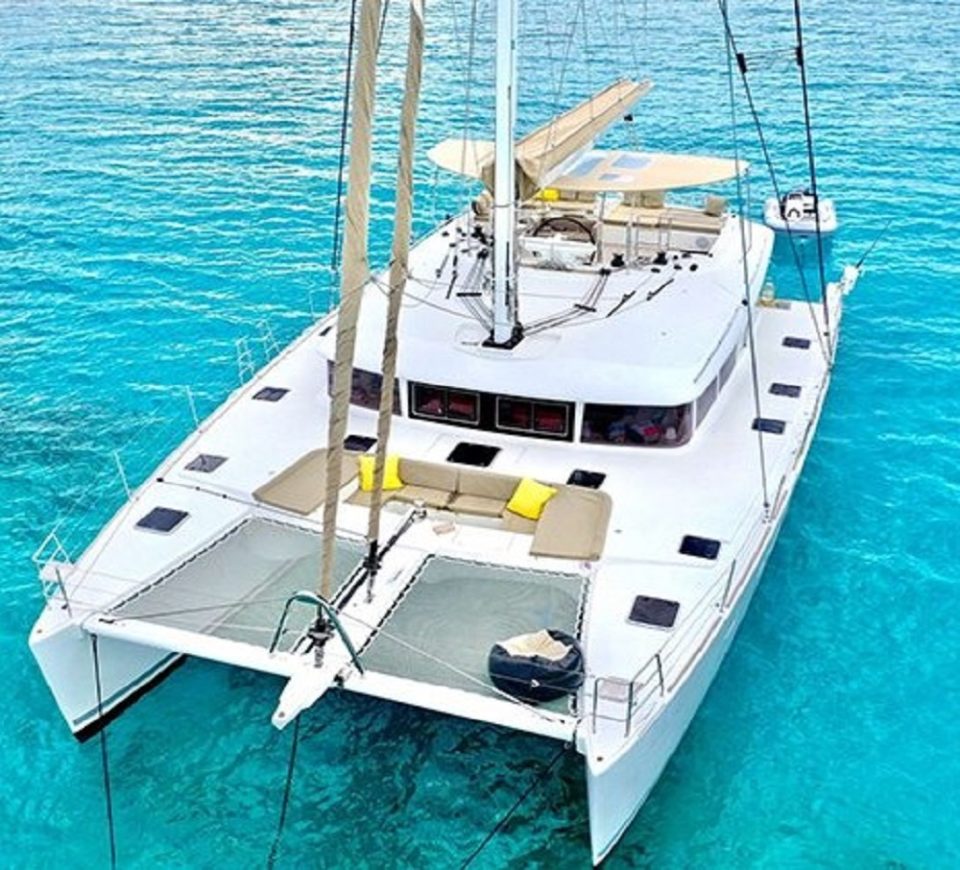
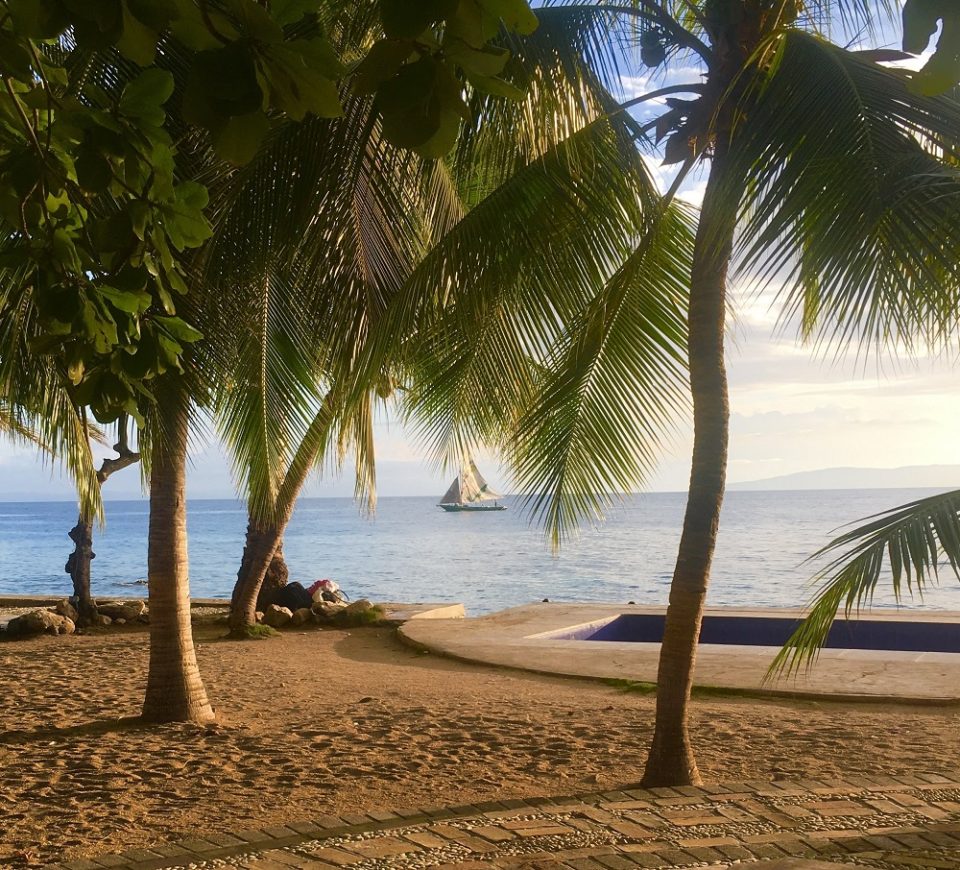
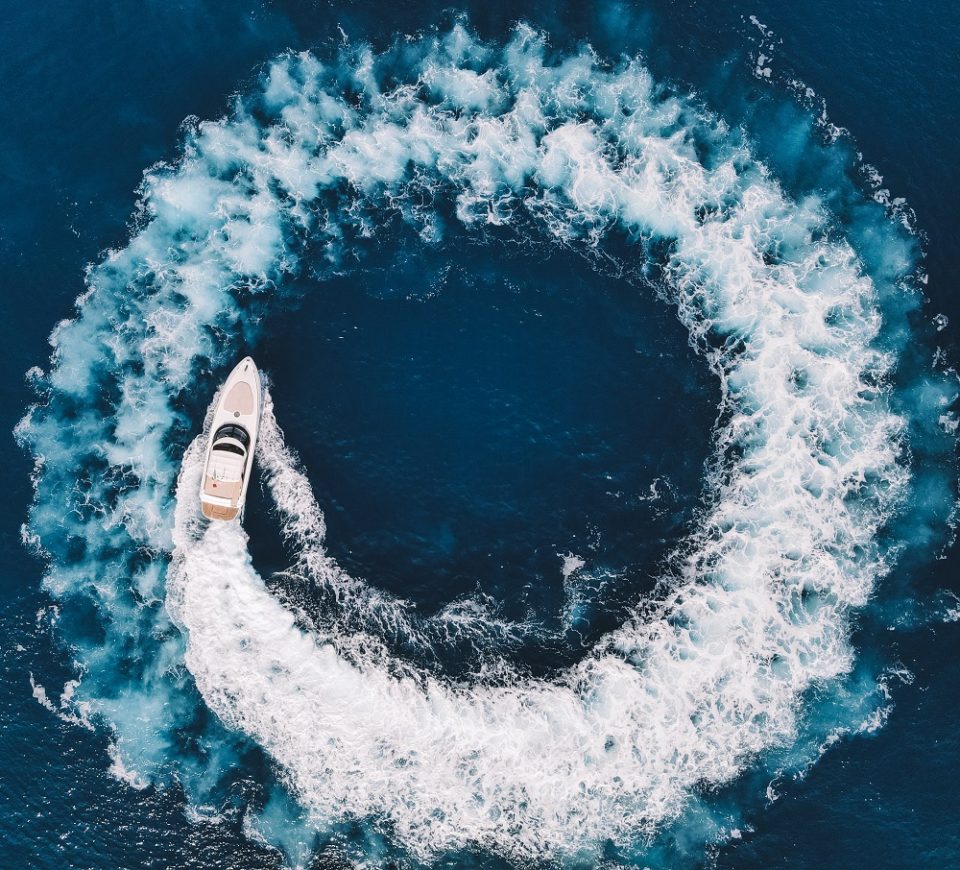
Whether you’re a fan of stability or speed, there’s one boat that can give you both – the trimaran vs catamaran. Catamarans provide plenty of living space and comfort in calm waters but struggle with choppy seas, while modern trimarans deliver excellent performance even on rough days yet still offer good room to relax onboard. But if vintage sailing is more your style opt for an older-style tri since it won’t be equipped with as much creature comforts!
Catamarans and trimarans are two types of watercraft that rapidly cut through the waves, but when it comes to speed one stands out above the rest. Trimarans have gained a reputation for being fast enough to take on any other vessel in a race – making them an excellent choice for anyone looking to shave precious seconds off their time!
When it comes to safety on the sea, two of the most popular vessels are Trimarans and Catamarans. Thanks to their side hulls, trimarans offer a much greater heeling angle compared with catamarans – meaning they’re less likely to capsize or sink in rough waters. However don’t let that put you off taking out a catamaran – while not as secure as its three-hulled cousin – these craft still provide plenty of stability for your seafaring adventure!
If you’re looking for an affordable seafaring vessel, the choice between a catamaran or trimaran can be daunting. With numerous factors that impact cost – from age and length to comfort levels and desirability – it’s often hard to tell which of these two sailing vessels will fit your budget best. But with some research, you’ll find just the right combination of affordability and quality suited perfectly to your needs!




